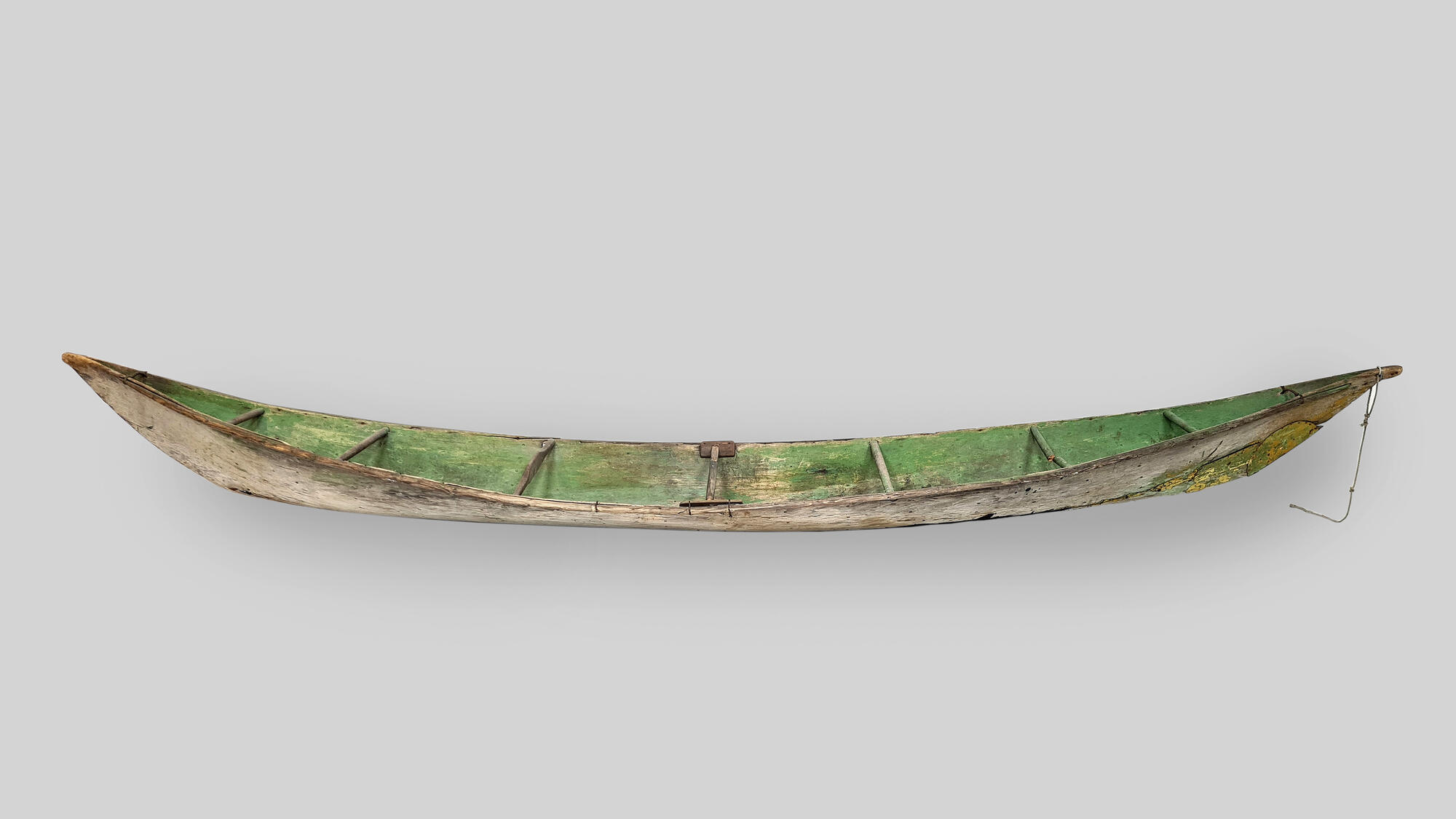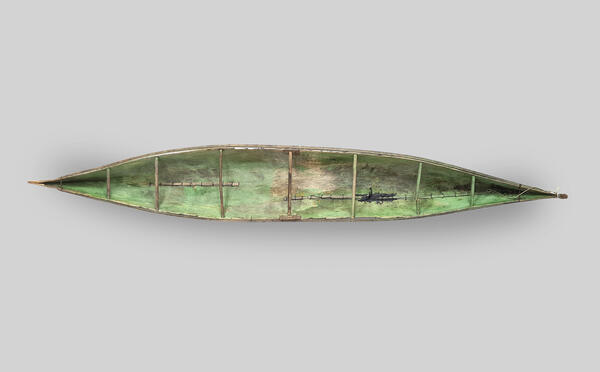Fishing is one of the traditional economic activities of the indigenous population of the North. From early childhood, Nenets boys learn fishing skills from older men: choose the right reservoir, repair and make gear, make a boat and learn how to use it. The Forest Nenets, like other indigenous peoples of the North, cannot swim. They explain this by the fact that they move on skis in winter and by boat in summer.
For a long time, a one-day boat hollowed out of cedar or aspen, which was also called “kaldanka” or “dolblyonka”, served as summer transport for the Nenets. The exhibition of the Purovsky Museum presents a Nenets kaldanka, made according to traditional canons from a single tree trunk. The best time for harvesting wood for boats is March. The Nenets begin to make boats in June, when the wood thaws, and finish before the onset of severe frosts. They choose a strong tree, with a healthy core, without cracks and branches, with a smooth natural curve.
The Nenets make boats on the shore, each fisherman makes a boat for himself, taking into account his own weight and figure dimensions. It is not customary for the Nenets to use other people’s boats. Before starting work, the bow and stern are determined in the workpiece, and the tree itself is fixed on two logs. Instead of a tape measure, the Nenets use 10-mm-long sticks to apply marks. The main part of the boat is hollowed out from the trunk of a tree using an adze, a carpentry tool that looks like an ax with a transverse blade. For finer work, a scraper is used.
Steaming is a special stage of making a kaldanka boat. To bend the sides of the boat outward and make it wider, hot water is poured inside or the boat is placed on supports above the fire. Wooden spacers are gradually changed to longer ones, and the result is fixed with transverse stiffeners.
A properly made dugout can compete with any modern boat in terms of speed, carrying capacity and maneuverability. A kaldanka is an environmentally friendly transport, it does not pollute the environment and, when it becomes unusable, it rots or burns in a fire.
For a long time, a one-day boat hollowed out of cedar or aspen, which was also called “kaldanka” or “dolblyonka”, served as summer transport for the Nenets. The exhibition of the Purovsky Museum presents a Nenets kaldanka, made according to traditional canons from a single tree trunk. The best time for harvesting wood for boats is March. The Nenets begin to make boats in June, when the wood thaws, and finish before the onset of severe frosts. They choose a strong tree, with a healthy core, without cracks and branches, with a smooth natural curve.
The Nenets make boats on the shore, each fisherman makes a boat for himself, taking into account his own weight and figure dimensions. It is not customary for the Nenets to use other people’s boats. Before starting work, the bow and stern are determined in the workpiece, and the tree itself is fixed on two logs. Instead of a tape measure, the Nenets use 10-mm-long sticks to apply marks. The main part of the boat is hollowed out from the trunk of a tree using an adze, a carpentry tool that looks like an ax with a transverse blade. For finer work, a scraper is used.
Steaming is a special stage of making a kaldanka boat. To bend the sides of the boat outward and make it wider, hot water is poured inside or the boat is placed on supports above the fire. Wooden spacers are gradually changed to longer ones, and the result is fixed with transverse stiffeners.
A properly made dugout can compete with any modern boat in terms of speed, carrying capacity and maneuverability. A kaldanka is an environmentally friendly transport, it does not pollute the environment and, when it becomes unusable, it rots or burns in a fire.





